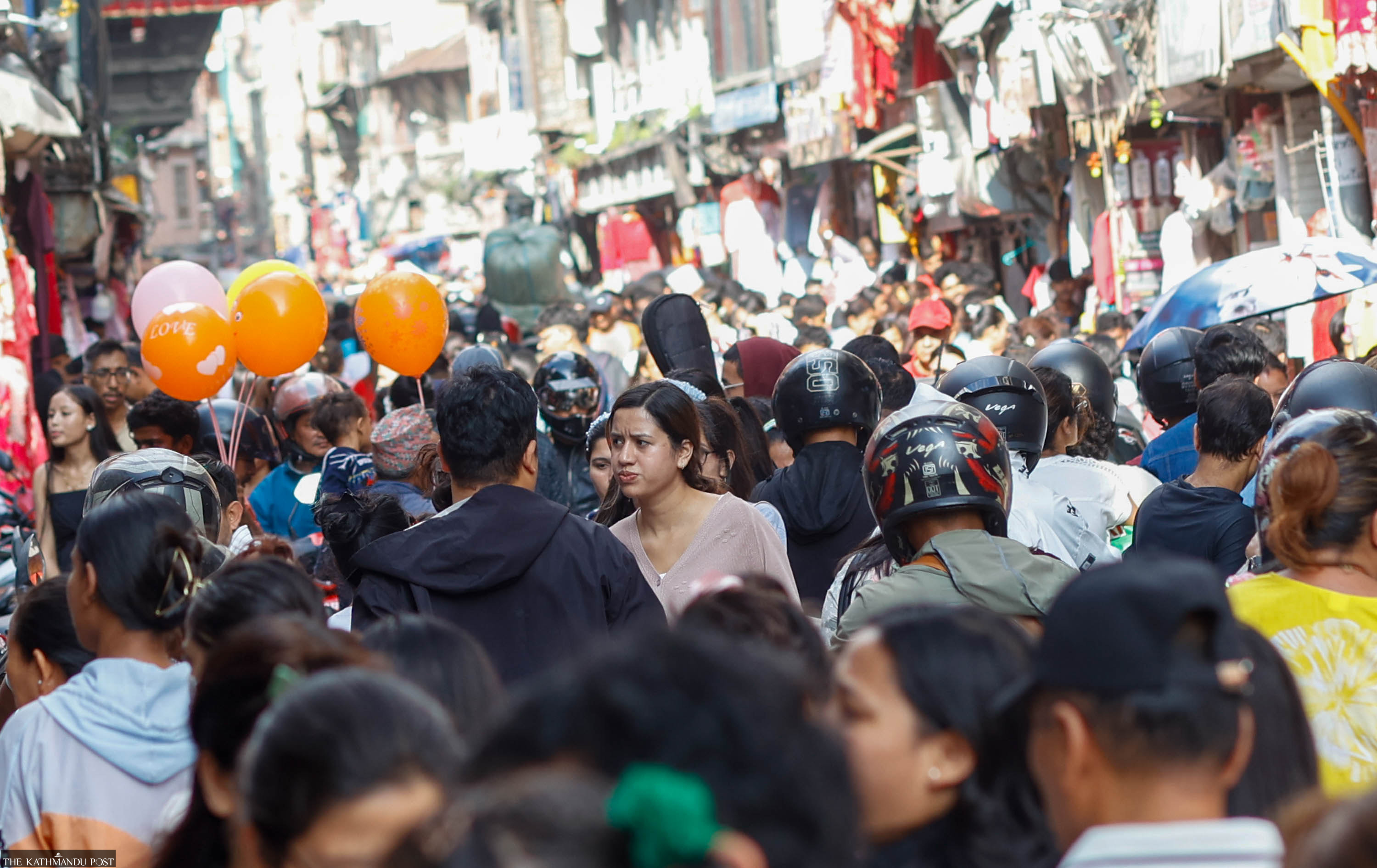Money
Nepal’s festive economy reels under protests and trade disruptions
Normally, the period leading up to Dashain is marked by packed marketplaces and record sales. Things are drastically different this year.
Krishana Prasain
Nepali traders fear this Dashain season could bring one of the worst business slumps in decades, as natural disasters and political unrest have combined to disrupt imports and weaken consumer confidence.
Dashain, the country’s biggest festival, begins on Monday with Ghatasthapana, the first of the 15-day celebrations.
Normally, the period leading up to Dashain is marked by packed marketplaces and record sales of garments, footwear, electronics, and household goods. But this year is a little different, with the supply pipeline collapsing.
For nearly two months, hundreds of containers loaded with festival-targeted goods have been stuck in Tibet after landslides and floods severed Nepal’s vital trade routes with China.
At the Rasuwagadhi border crossing, a flash flood from China in July swept away the Miteri Bridge and damaged customs facilities. The alternate Tatopani route has also been blocked by repeated landslides along the Araniko Highway.
China has become a critical supplier for Nepal’s festivals, especially for garments and decorative items. But with both Rasuwagadhi and Tatopani shut, traders are left with empty shelves.
“Around 1,500 containers have been stranded in Tibet for the past two months,” said Ram Hari Karki, president of the Nepal Trans Himalayan Border Commerce Association. “Not only Dashain goods, even Teej shipments never arrived in Kathmandu.”
The impact on markets has been devastating.
“As the goods did not arrive on time, we expect festive business to decline by 90 percent compared to last year’s volume,” Karki said.
Wholesalers, who typically receive goods from the northern border and distribute them across the country, say the flow has almost completely dried up.
The economic disruption comes at a politically fragile moment. The Generation Z protests in the second week of September toppled the KP Sharma Oli government, leaving an interim administration struggling to restore order.
Dozens of lives were lost in the uprising, thousands of prisoners escaped during the chaos, and consumer sentiment has been badly shaken.
“This time of year the markets would already be crowded, but footfall is lower than expected,” said Ganesh Kumar Neupane, former president of the Khichapokhari New Road Traders Association.
“People are mourning, they are insecure, and they are not shopping like they did.”
For ordinary Nepalis, the slowdown is visible in empty shelves, rising prices, and subdued markets at a time usually filled with celebration.
The country’s most vibrant festive season has instead exposed just how vulnerable Nepal’s economy remains to external shocks and domestic unrest.
Economists say the downturn is not limited to retail.
Manufacturing and wholesale trade have also slowed, with factories running below capacity due to raw material shortages.
Tourism, another key sector, has seen mass cancellations of trekking and hotel bookings after the protests deterred prospective travellers from abroad.

“The confluence of political instability, natural disaster and weak external trade has put Nepal in a low-growth trap,” trade expert Posh Raj Pandey, told the Post in a recent interview. “Even if stability returns, the economy will take months to recover from these shocks.”
Some traders are trying to reroute shipments. Around 40 trucks are expected to arrive via the Korala border in Mustang, though the goods take three days to reach Kathmandu.
A handful of shipments have been diverted via Kolkata port, mostly winter garments, but the process is costly.
Small-scale traders, who rely on loans to finance imports, cannot afford such rerouting. Only 5–7 percent of goods have made it through Kolkata so far.
Perishable goods such as apples, once carried by porters along blocked roads, are now impossible to transport.
Traders complain that repeated requests to the previous Oli government for ease of supply went unanswered, and insiders say the state is losing billions in customs revenue in what should be the busiest trading season of the year.
Kulman Ghising, who now oversees key ministries in the interim government, has instructed agencies to speed up clearance from the northern border. But ongoing rainfall and landslides in Daklang have made road repairs difficult.
The financial fallout for traders is severe.
“Most imports were financed with loans, and traders will struggle to pay back on time. Seasonal stock such as summer wear and Teej items will now sit in warehouses, adding to storage costs,” said Kumar Karki, president of the Nepal National Traders’ Federation.
Limited shipments that do arrive could cost 5–10 percent more due to higher transport charges.
Nepal imported goods worth Rs341.1 billion in the last fiscal year, according to the customs department.
This year, however, the combination of natural disasters, political upheaval, and consumer unease threatens to push the festival economy into its deepest slump in years.




 6.84°C Kathmandu
6.84°C Kathmandu















